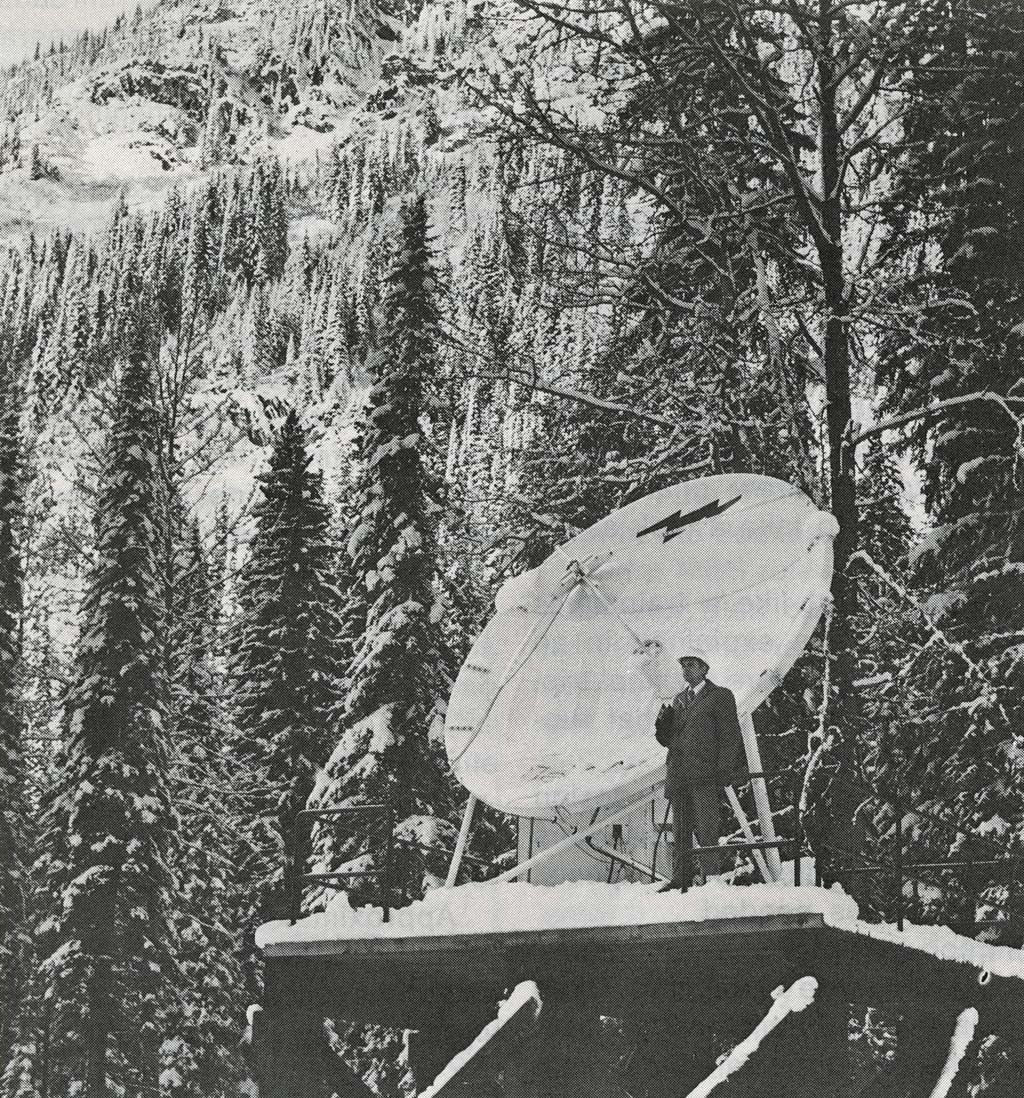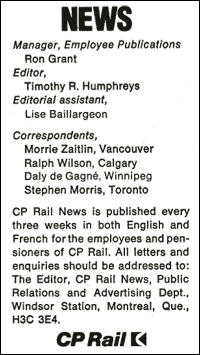|
|
 |
Vol. 12
Number 1 Jan 13, 1982 |
Solves Problems
Posed by Slides

Glacier B.C. - Canadian Pacific first pushed through the Rocky Mountains during the 1880's, dealing with mud and snow slides has been a perplexing problem.
Not only do avalanches create hazards for train crews operating their mile-long freights, they also disrupt crucial communication lines between Revelstoke and Glacier, a key rail link.
Last month, in conjunction with BC Tel and Telesat Canada, CP Rail leased and installed its first satellite earth station here.
Now, rather than having to depend on telephone lines strung on poles along the tracks, train crews will be able to communicate directly with their dispatchers via Telesat's Anik-B satellite positioned in a geosynchronous or stationary orbit 22,300 miles above the equator.
"Under the old system, whenever there was a mudslide or snowslide, the poles invariably came down. Obviously, that made operations extremely difficult for us," said John Targett, superintendent of communications in the Pacific Region, who handled the local installation of the earth station and administration of the project.

With the satellite system, when a locomotive engineer wants to communicate between Revelstoke and Glacier, his voice transmission will travel along an underground telephone line to Telesat's satellite dish at Forest Lawn, near Calgary.
VIRTUALLY INSTANTANEOUS
The signal is then beamed to the Anik-B satellite where it is bounced back to earth to be picked up by CP Rail's 12-foot diameter dish at Glacier, 50 miles west of Golden, B.C. Despite the distance travelled, the communication link is virtually instantaneous.
Because CP Rail's earth station is located in a national park, Mr. Targett's department consulted with Parks Canada to determine which structures would be most suitable.
"We took special effort to construct structures, towers, buildings, etc., that would be aesthetically pleasing and blend in with the environment," explained Mr. Targett.
The result was the selection of green building materials that almost disappear against the backdrop of tall pines.
Leasing the earth station here costs the railway about $12,000 a month. However, it's money well-spent when the cost of upgrading pole lines and restoring communications after avalanches is taken into consideration.
 and is reprinted here with their permission.
All photographs, logos, and trademarks are the property of the Canadian Pacific Railway Company.
and is reprinted here with their permission.
All photographs, logos, and trademarks are the property of the Canadian Pacific Railway Company.